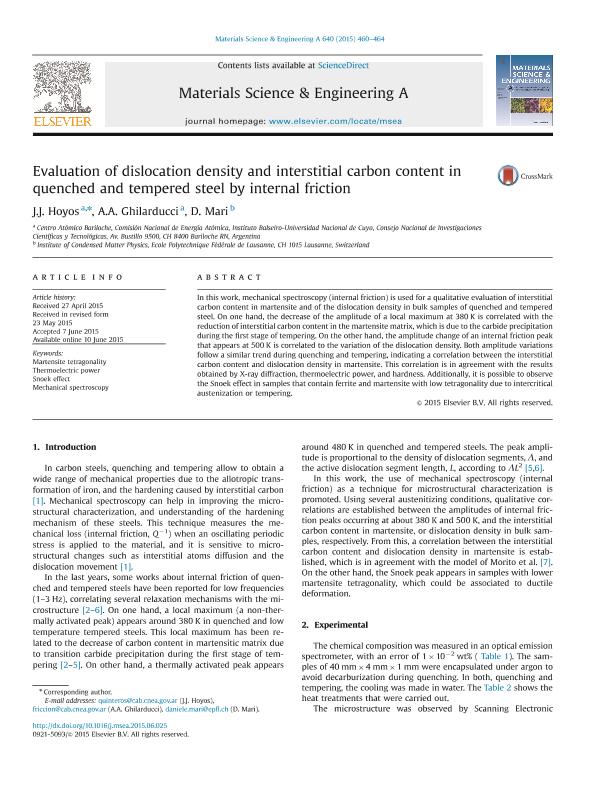Artículo
Evaluation of dislocation density and interstitial carbon content in quenched and tempered steel by internal friction
Fecha de publicación:
07/2015
Editorial:
Elsevier Science Sa
Revista:
Materials Science and Engineering A: Structural Materials: Properties, Microstructure and Processing
ISSN:
0921-5093
Idioma:
Inglés
Tipo de recurso:
Artículo publicado
Clasificación temática:
Resumen
In this work, mechanical spectroscopy (internal friction) is used for a qualitative evaluation of interstitial carbon content in martensite and of the dislocation density in bulk samples of quenched and tempered steel. On one hand, the decrease of the amplitude of a local maximum at 380. K is correlated with the reduction of interstitial carbon content in the martensite matrix, which is due to the carbide precipitation during the first stage of tempering. On the other hand, the amplitude change of an internal friction peak that appears at 500. K is correlated to the variation of the dislocation density. Both amplitude variations follow a similar trend during quenching and tempering, indicating a correlation between the interstitial carbon content and dislocation density in martensite. This correlation is in agreement with the results obtained by X-ray diffraction, thermoelectric power, and hardness. Additionally, it is possible to observe the Snoek effect in samples that contain ferrite and martensite with low tetragonality due to intercritical austenization or tempering.
Archivos asociados
Licencia
Identificadores
Colecciones
Articulos(CCT - PATAGONIA NORTE)
Articulos de CTRO.CIENTIFICO TECNOL.CONICET - PATAGONIA NORTE
Articulos de CTRO.CIENTIFICO TECNOL.CONICET - PATAGONIA NORTE
Citación
Hoyos, J. J.; Ghilarducci, Ada Albertina; Mari, D.; Evaluation of dislocation density and interstitial carbon content in quenched and tempered steel by internal friction; Elsevier Science Sa; Materials Science and Engineering A: Structural Materials: Properties, Microstructure and Processing; 640; 7-2015; 460-464
Compartir
Altmétricas




